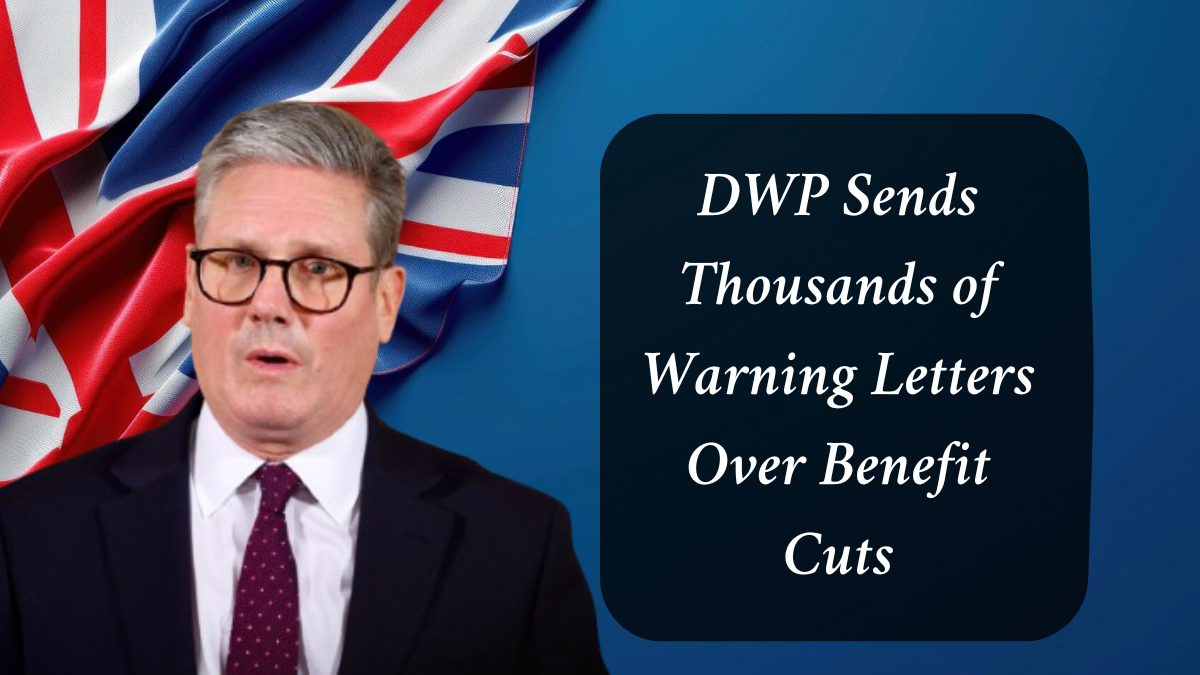Thousands of parents and families across the UK are receiving urgent notices from the Department for Work and Pensions (DWP). These letters warn that both Child Tax Credits and Working Tax Credits will officially end on April 5, 2025.

The move is part of the DWP’s “managed migration” plan to transfer all recipients of legacy benefits onto Universal Credit by March 2026. This transition has major implications for millions of households.
Summary Table Of DWP Warning Letters
| Key Information | Details |
|---|---|
| Deadline for Tax Credits | April 5, 2025 |
| What’s Changing | Tax Credits ending; claimants must move to Universal Credit |
| Who’s Affected | Child Tax Credit and Working Tax Credit recipients |
| Action Required | Apply for Universal Credit upon receiving a migration notice |
| What You Risk | Loss of all benefit payments if no action is taken |
| Transitional Protection | Available only if you apply before the deadline |
| Official Link | gov.uk – Move to Universal Credit |
Who Needs to Take Action?
The immediate focus is on those currently receiving:
-
Child Tax Credit
-
Working Tax Credit
Later stages of the migration will affect claimants of:
-
Housing Benefit
-
Income-based Jobseeker’s Allowance (JSA)
-
Income-related Employment and Support Allowance (ESA)
-
Income Support
If you’re on any of these legacy benefits and haven’t yet received a migration letter, you will by the end of 2025. Once you get the letter, you have three months to apply for Universal Credit. If you don’t apply within this window, your current payments will stop completely.
What the DWP Letters Say
The letters being sent warn recipients that Tax Credit payments will cease on the deadline date. The DWP has made it clear on its official site:
“Tax credits end on 5 April 2025. No more payments will be made after that.”
That means claimants who ignore the notice or delay the application process risk losing their financial support altogether.
Why Transitional Protection Matters
If you’re concerned about losing money in the transition, transitional protection is key.
What is Transitional Protection?
It’s a financial cushion offered to those who would receive less money under Universal Credit compared to their current benefits. For example:
-
Current monthly Tax Credits: £600
-
Entitlement under Universal Credit: £400
-
Transitional top-up: £200
This ensures a smoother transition and prevents an immediate drop in income. But here’s the catch: it’s only available to those who apply before their migration deadline.
If you miss the deadline but apply later, you can still receive Universal Credit, but you won’t get this transitional support.
Awareness Gap
A study by Ipsos UK for the DWP found that:
-
78% of people had heard of Universal Credit.
-
But 70% were unaware that transitional protection even exists.
This gap in awareness is troubling, especially since it can significantly affect how much families receive post-migration.
The Bigger Picture: Universal Credit Rollout
The end of Tax Credits is just the beginning. The DWP’s goal is to have all legacy benefit claimants on Universal Credit by March 2026. That includes those receiving:
-
Housing Benefit
-
Income-based JSA
-
Income-related ESA
-
Income Support
Migration letters will continue going out in waves throughout 2024 and 2025.
PIP Reforms and Wider Benefits Overhaul
While rolling out Universal Credit, the DWP is also pushing forward with controversial reforms to Personal Independence Payment (PIP).
These changes aim to cut costs, but critics say they risk worsening poverty and disability hardship.
Rising Benefit Costs
The government’s push to cut and consolidate benefits comes as working-age health-related benefit spending has increased sharply—from £36 billion in 2019-20 to £48 billion in 2023-24.
This includes payments to those with disabilities, long-term illnesses, and low incomes.
Public Concerns and Criticism
Critics argue that the government is downplaying the impact of these cuts.
The New Economics Foundation (NEF) estimates that as many as 340,000 people could be pushed into poverty—100,000 more than the government estimates.
Tom Pollard, NEF’s head of social policy, warned:
“It is misleading to suggest that this materially offsets the scale and impact of actual cuts the Government plans to implement.”
DWP’s Position
In response to criticism, a DWP spokesperson said:
“Helping people into good work and financial independence is at the heart of our Plan to Change.”
This aligns with the DWP’s broader strategy of encouraging employment and reducing long-term reliance on welfare.
How to Prepare: What You Should Do Now
-
Check Your Mailbox
If you receive a migration notice, take it seriously. -
Apply Promptly
Start your Universal Credit claim immediately to secure transitional protection. -
Use the Online Tool
Visit gov.uk to learn how to apply. -
Get Advice
If you’re confused or unsure, speak to a local benefits advisor or contact Citizens Advice.
Frequently Asked Questions (FAQs)
Q1: When do Tax Credits end?
A: April 5, 2025.
Q2: What happens if I don’t apply for Universal Credit after getting the notice?
A: Your benefits will stop completely.
Q3: What is transitional protection?
A: It’s a financial top-up that ensures you don’t lose money during the switch to Universal Credit—available only if you apply before your deadline.
Q4: Can I still move to Universal Credit after the deadline?
A: Yes, but you won’t receive transitional protection.
Q5: Where can I apply for Universal Credit?
A: Apply here
Q6: What other benefits are affected by the migration?
A: Housing Benefit, Income-based JSA, Income-related ESA, Income Support, and both Tax Credits.
Final Thoughts
This is a major shift in the UK benefits system. With hard deadlines, limited protections, and serious consequences for delay, it’s vital that affected families act quickly. Don’t wait for the deadline to pass. If you’ve received your migration letter, take steps now to secure your financial stability.
For More Information Click Here